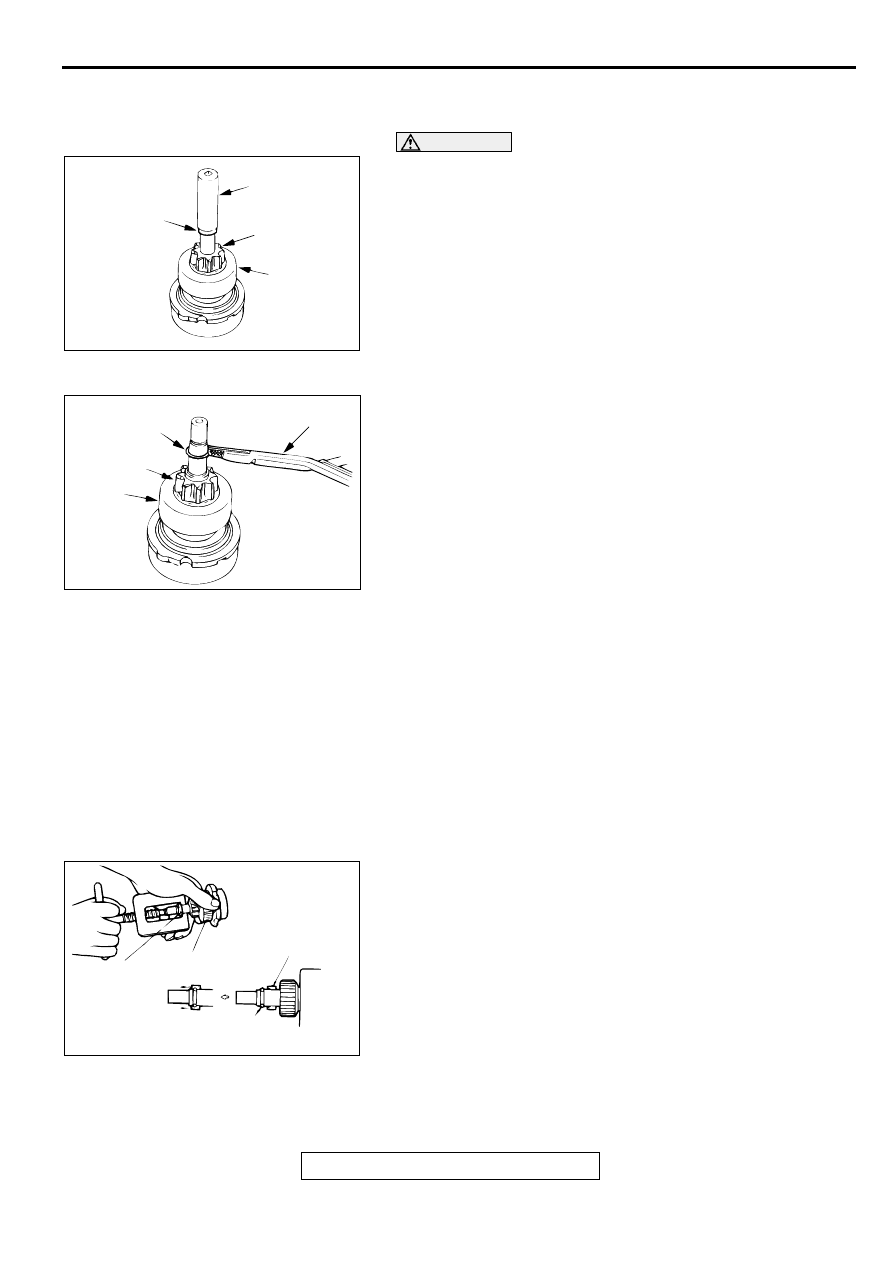Mitsubishi Eclipse / Eclipse Spyder (2000-2002). Service and repair manual - part 363

STARTING SYSTEM
TSB Revision
ENGINE ELECTRICAL
16-29
DISASSEMBLY SERVICE POINTS
<<A>> ARMATURE AND BALL REMOVAL
CAUTION
When removing the armature, take care not to lose the ball
(which is used as a bearing) in the armature end.
<<B>> SNAP RING AND STOP RING REMOVAL
1. Press a long socket wrench of appropriate size to the stop
ring. Then tap the socket wrench to remove the stop ring to
the pinion gear side.
2. After removing the snap ring (by using snap-ring pliers),
remove the stop ring and the overrunning clutch.
STARTER MOTOR PART CLEANING
1. Do not immerse parts in cleaning solvent. Immersing the
yoke and field coil assembly and/or armature will damage
insulation. Wipe these parts with a shop towel only.
2. Do not immerse the drive unit in cleaning solvent.
Overrunning clutch is pre-lubricated at the factory and
solvent will wash lubrication from the clutch.
3. The drive unit may be cleaned with a brush moistened with
cleaning solvent and wiped dry with a shop towel.
ASSEMBLY SERVICE POINT
>>A<< STOP RING AND SNAP RING INSTALLATION
1. Using a suitable pulling tool, pull the overrunning clutch stop
ring over the snap ring.
AKX00370
SOCKET
STOP RING
PINION GEAR
OVERRUN-
NING
CLUTCH
AB
AKX00371
SNAP RING
PINION
GEAR
OVERRUN-
NING
CLUTCH
SNAP-RING
PLIERS
AB
AKX00372
STOP RING
OVERRUNNING
CLUTCH
SNAP RING
STOP
RING
AB